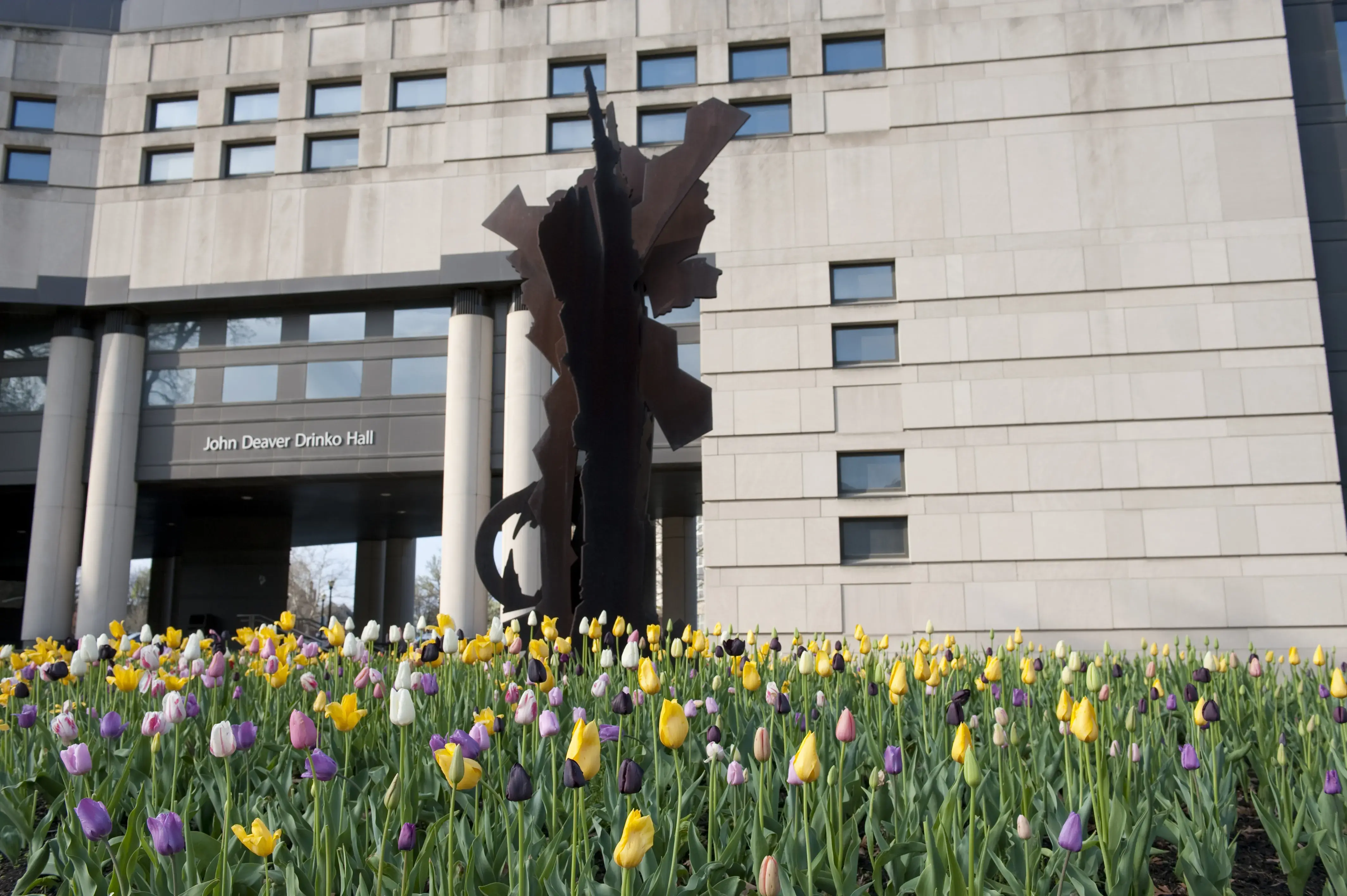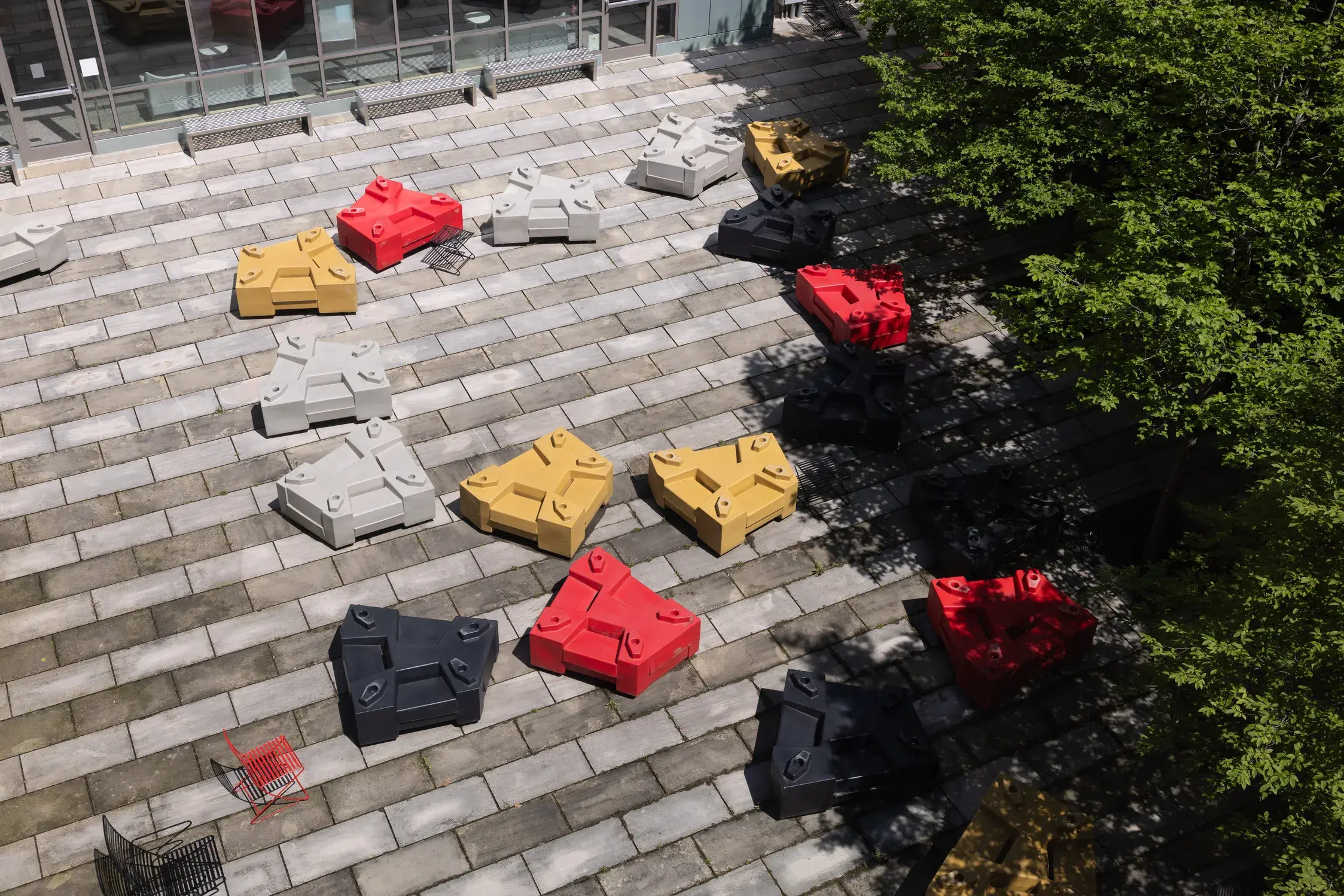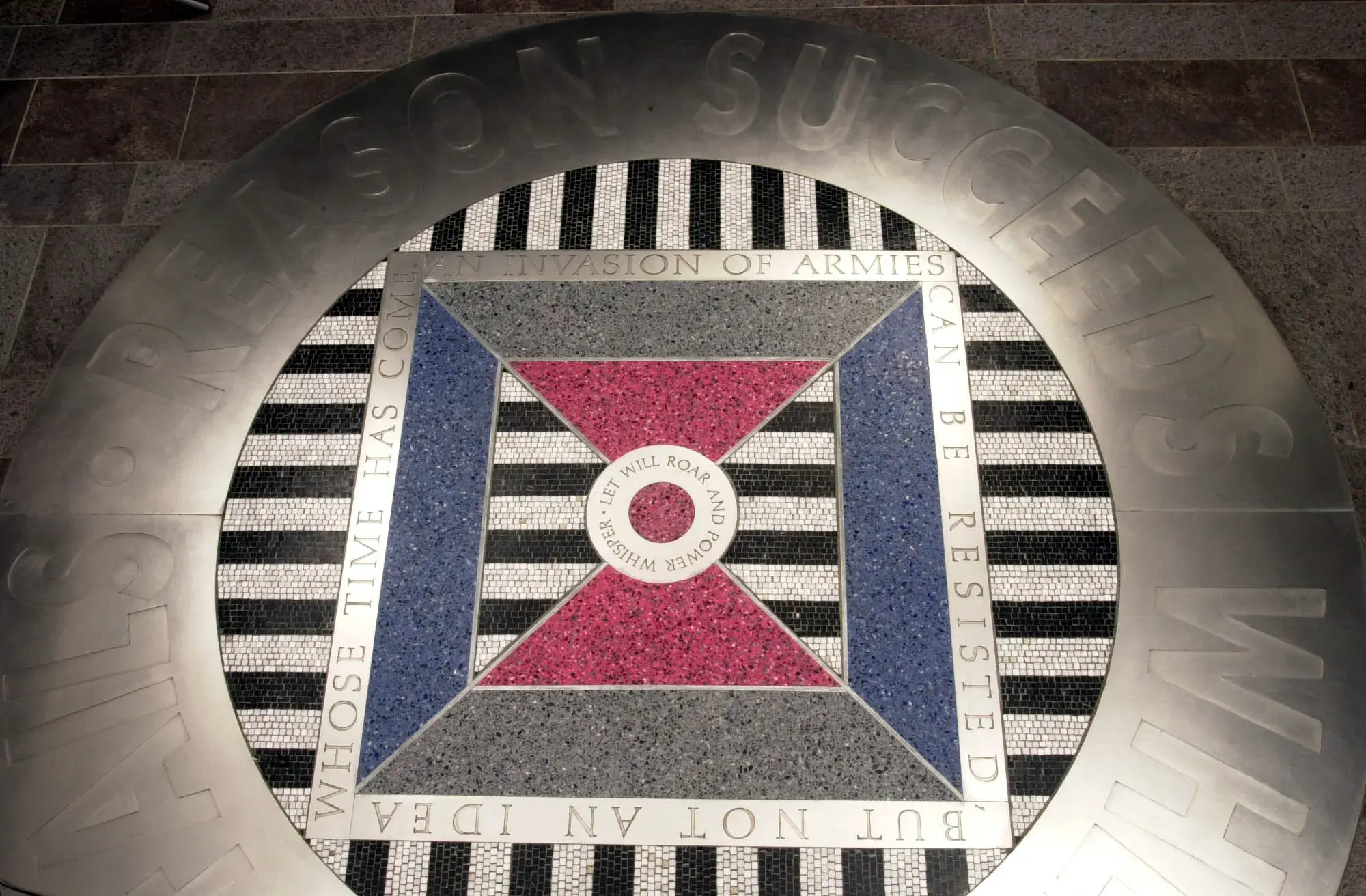
About the Art
Barbara Kruger’s untitled floor marker installation spreads across all five buildings comprising The Ohio State University’s Max M. Fisher College of Business. Large terrazzo floor medallions, produced from a combination of steel, marble and colorful mosaic tesserae, inscribe text onto the ground over which all who enter Fisher, Pfahl, Shoenbaum, Gerlach and Mason Halls must walk. Formed from beautiful and enduring materials, Kruger’s work includes notable quotations from a diverse array of ancient and modern sources about the pursuit of knowledge and the importance of new ideas. The quotations are meant to remind students, faculty, staff and visitors not only of the aspirations but also the responsibilities of those who study business and commerce. It isn’t just the texts of the medallions that provoke thought; so too do their individual compositions and design. One's palette is restricted to a simple cool blue and maroon in addition to black and white. Another has a series of concentric circles in the colors of the rainbow. All of them are formally similar to one another, though, in that each is surrounded by a circle of inscribed steel marking the boundary between the work and the rest of the floor.
Collection of The Ohio State University. Funded through the Ohio Percent for Art program.
Material
Mosaic, marble, stainless steel and terrazzo
Location
One floor mosaic in each of the following buildings: Fisher Hall, Gelach Hall, Mason Hall, Pfahl Hall, Schoenbaum Hall
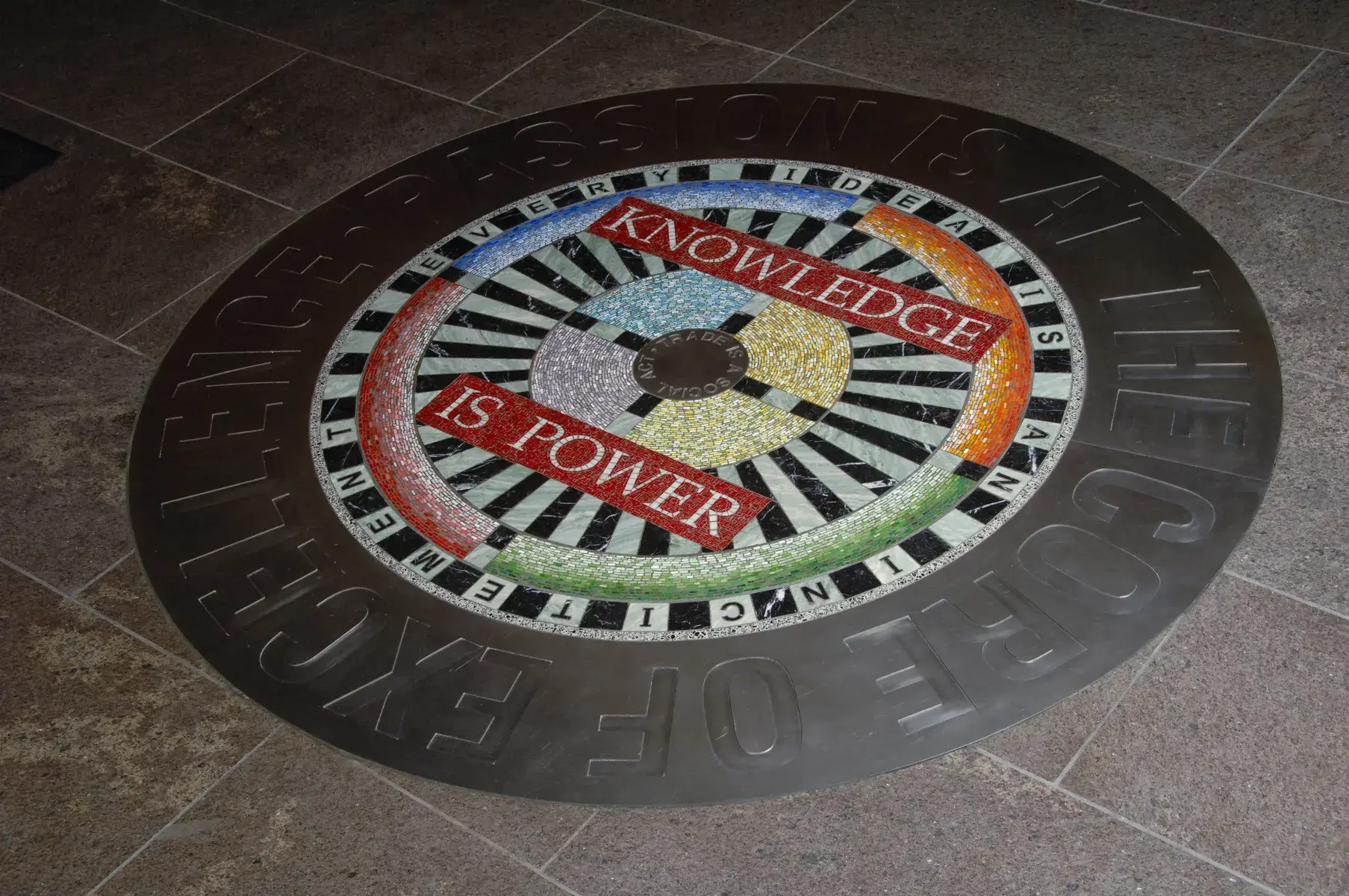
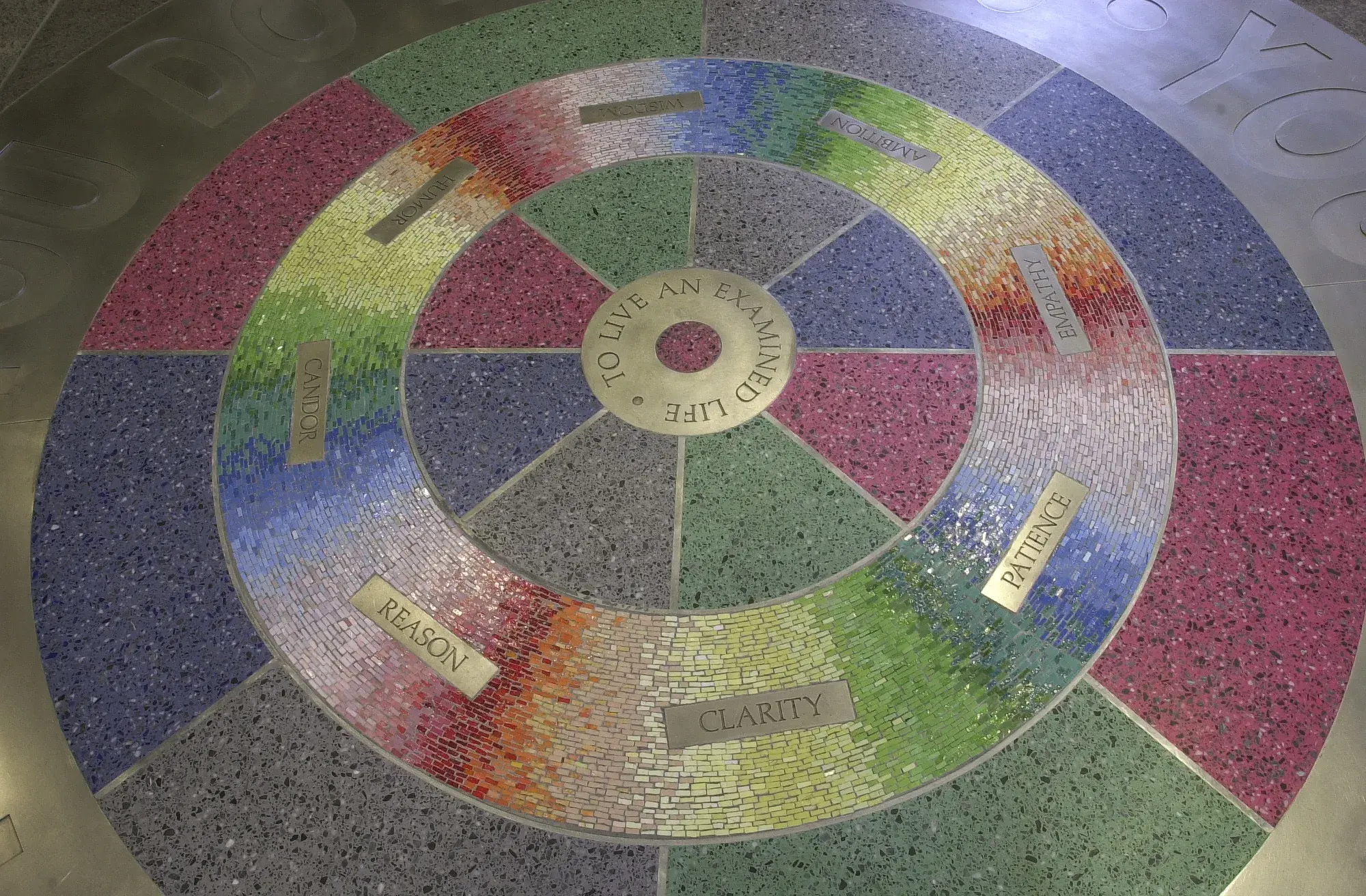

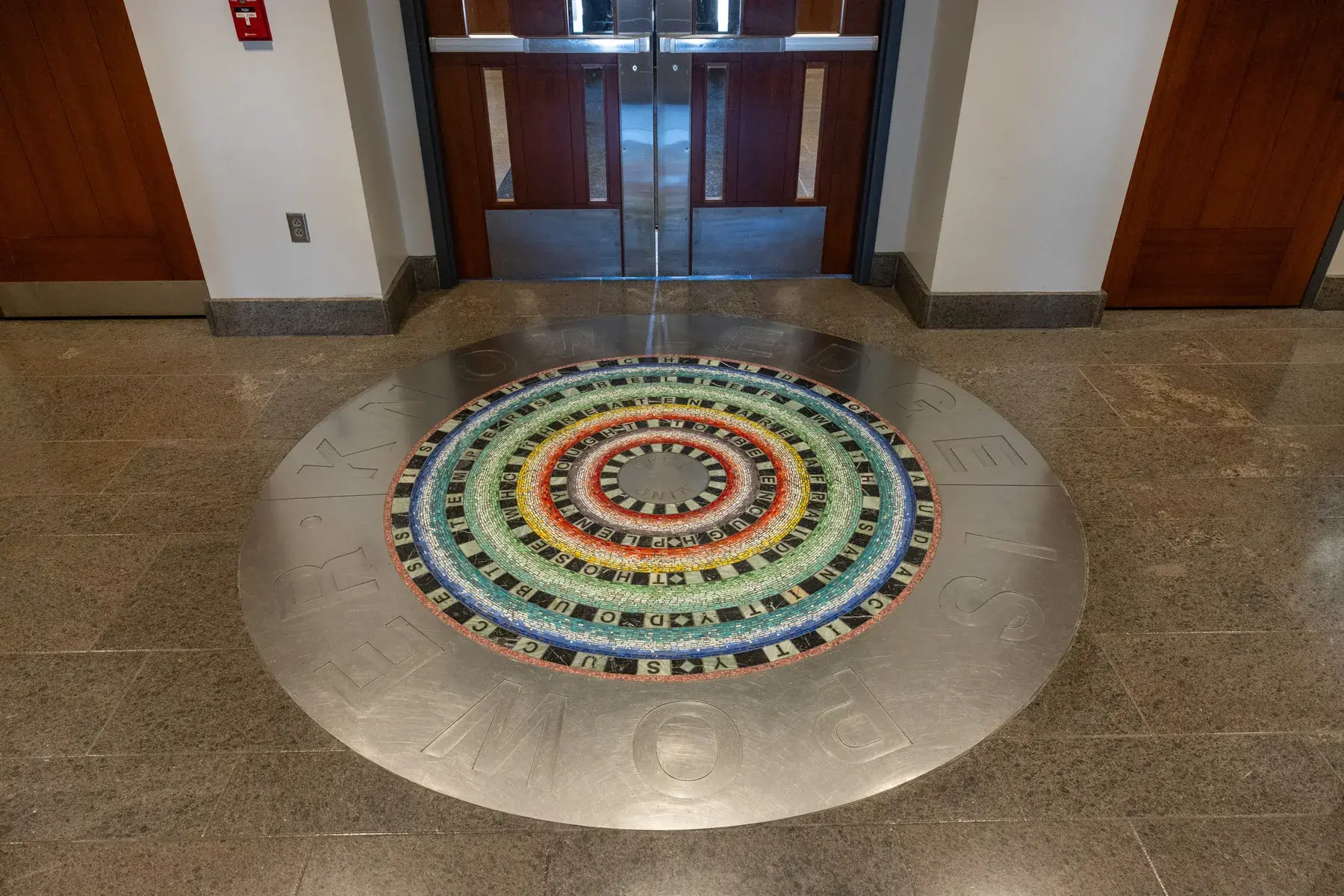
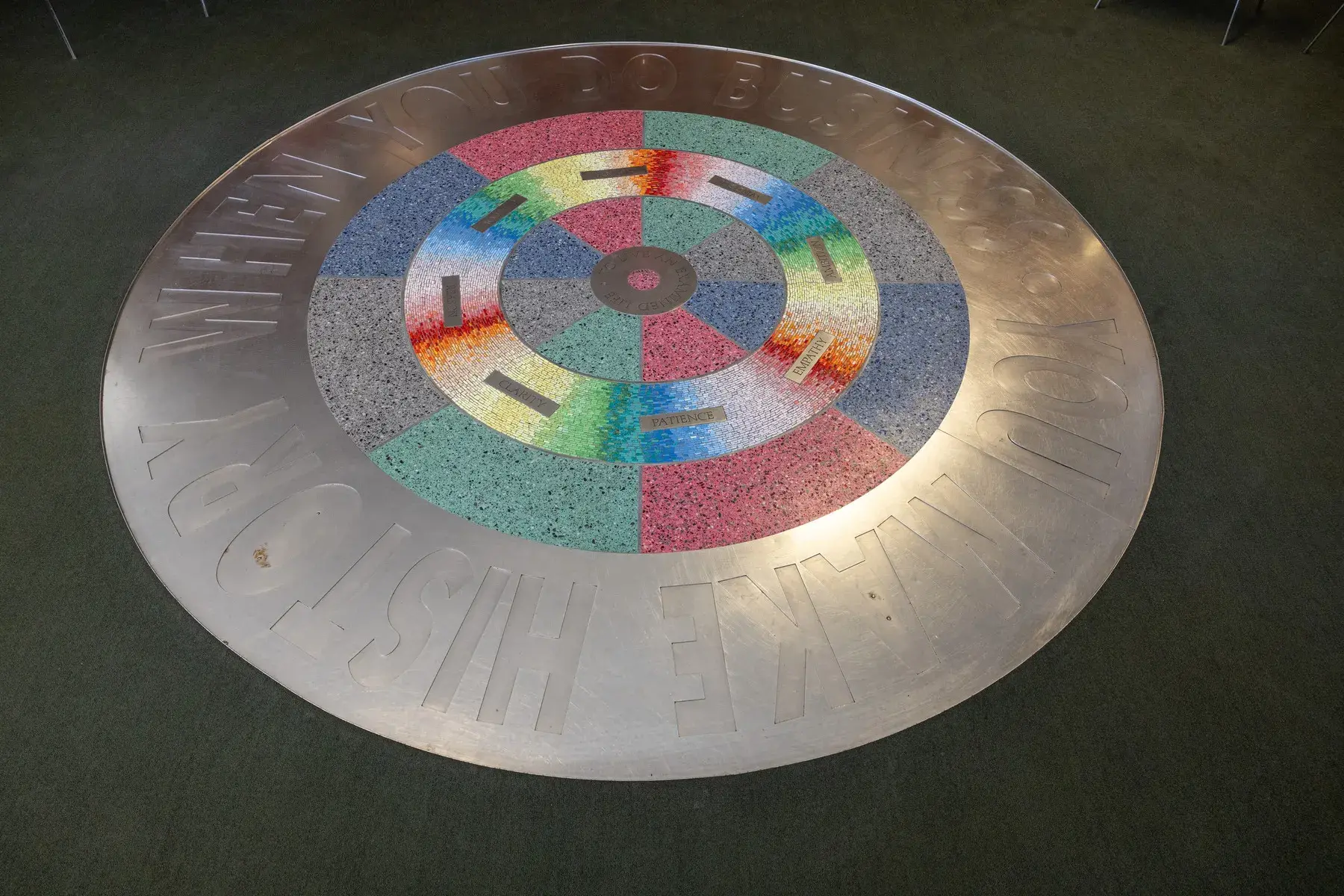
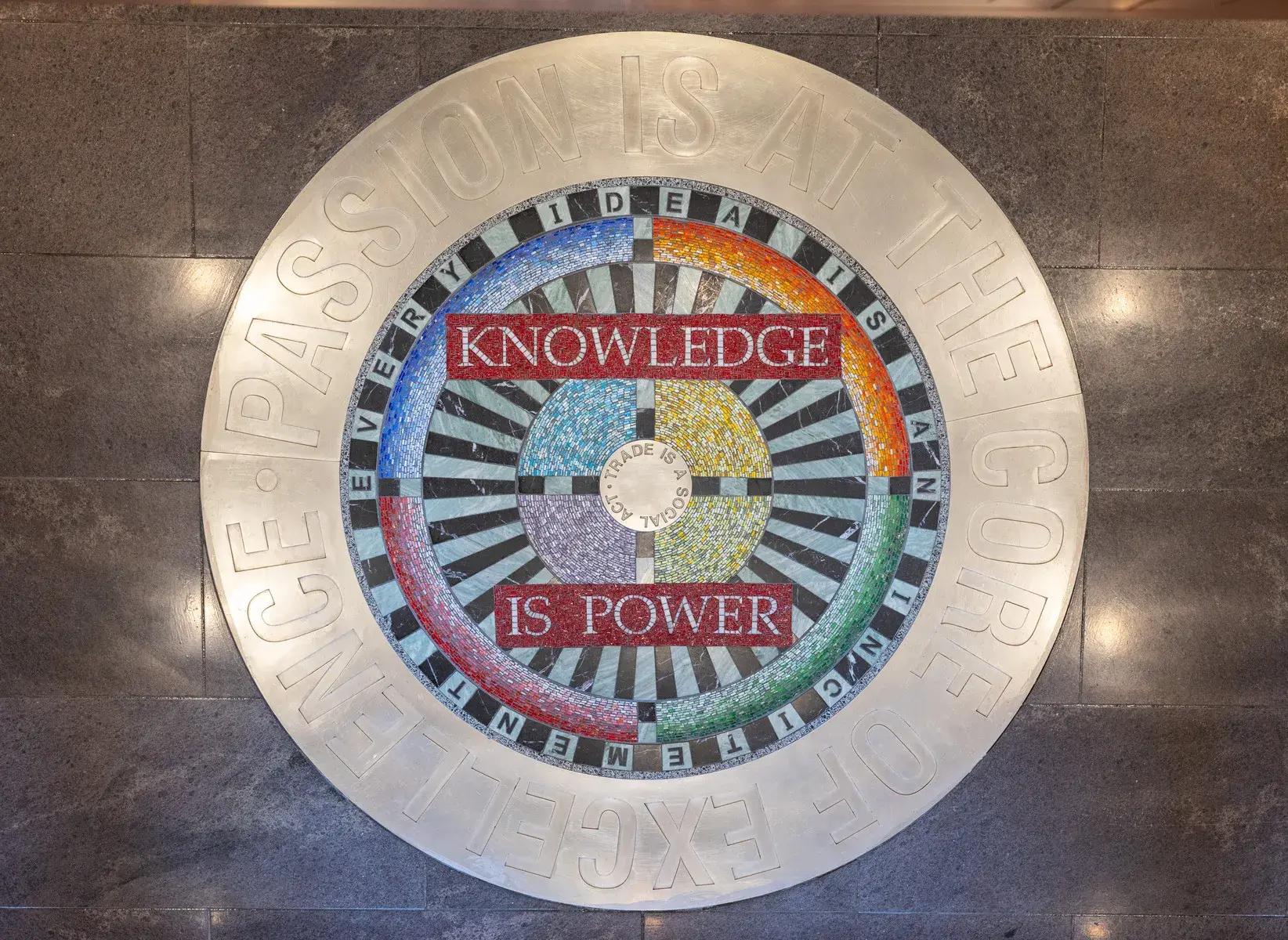
About the Artist
Barbara Kruger is an American artist whose untitled floor markers draw on her long career engaging with graphic design and the power of the declarative statement. Her work is heavily influenced by the aesthetics of post-World War II advertising. She studied at Parsons School of Design in New York City in the 1960s and then had a brief career as a layout designer for Condé Nast before becoming an artist. Kruger’s art casts a critical eye on mass media culture and its means of dissemination. Her most famous works juxtapose photographs and texts presented in the guise of confident advertisements. Her prints and public installations prompt the viewer to consider the impact of how text and images are delivered, not just what they say. Kruger is often associated with the Pictures Generation, a group of American conceptual artists from the late 20th century who shared a critical interest in post-war culture.
